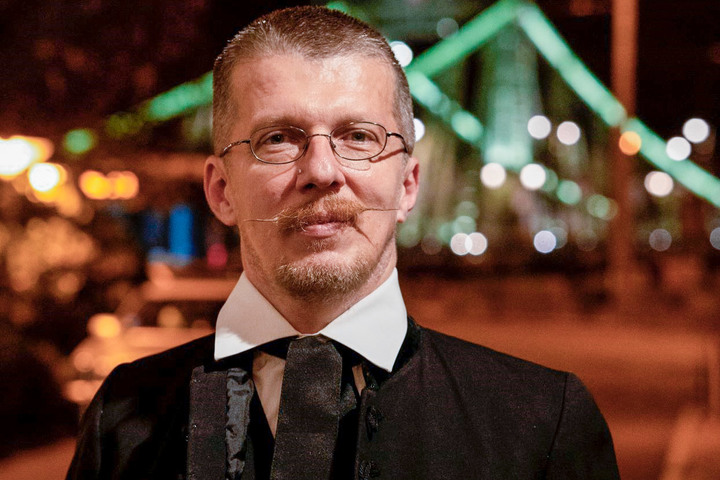"Arad is the Hungarian Golgotha"
Zoltán Babucs, a military historian at the Institute of Hungarian Research, gave a presentation at the commemoration in Pozsony (today: Bratislava, Slovakia) on the imperial reprisals of 1849 and the martyrs of Arad. We quote from a summary by Éva Dunajszky on ma7.sk
If the surrender had taken place in front of Haynau, we would not be talking of 13 martyrs of Arad, but of many more.
In April 1849, when the dethronement took place, Kossuth and his party actually condemned the Hungarian war of independence to death, because Europe did not want to upset the status quo, did not want the Habsburg Empire to fall apart into its constituent elements here in the Danube basin. Therefore, they supported the initiative of Franz Joseph I to crush the Hungarian War of Independence with military force, Zoltán Babucs said, adding that in order to do so, they needed the help of another European superpower, the Tsarist army.
"Görgey laid down his arms in front of the Tsarist troops, if the surrender had taken place in front of Haynau, we would not be talking about 13 martyrs of Arad, but about many more people," Babucs added. Government Commissioner János Ludwig said of Haynau:
"Haynau was a man who found pleasure in cruelty. The Austrians themselves thought him a deranged madman. Judging by his inclination to be cruel, he would not spare a single prisoner, but would have all of them killed.

Haynau spared no one.
Indeed, Haynau spared no one when, as commander-in-chief of the imperial troops in Hungary, he had Major László Baron Mednyánszky and Captain Fülöp Grúber hanged on Szamár Hill in Pozsony, who were officers of the Lipótvár fortress and were among those who protested against the surrender of the fortress. Mednyánszky's execution shocked Hungarian society, as there had never been a precedent for the execution of a Hungarian aristocrat who had previously been an officer of the imperial royal army.
"After that, the avenging institution was set in motion, and the imperial martial courts issued death sentences one after the other," added Zoltán Babucs.
Further on, Zoltán Babucs also spoke about how the martyrs spent their last night, which is excellently documented in Tamás Katona's two-volume work titled The Martyrs of Arad. In this book, not only the trial material can be studied, but also the last letters of the martyrs of Arad and their diaries of 48-49, the historian Mr. Babucs said. After the historical events, we were given a closer look at why the martyrs of Arad were sentenced, and we were also able to hear stories about their lives. For example, we learned that on 20 July 1849, the day of the cavalry battle of Tura, Aristid Dessewffy, a general from Upper Hungary, who was born 220 years ago, fought with the courage worthy of Leonidas.
"The Russians thought, since Dessewffy was in full general's regalia, that is, in Hungarian general's uniform, with a crucifix on his neck, that a Hungarian bishop was leading the Hussars on the charge," Babucs said.
Dessewffy must have been very optimistic about the course of the operation, as he got married on 5 July 1849, in the middle of the summer campaign, and then went out to join his troops. His former colonel, who had persuaded him to stay at home and not emigrate to Turkey, did everything in his power to ensure Dessewffy's escape, but Haynau's mercy only extended to having him shot, not hanged.
Dessewffy's body was also taken to the family crypt in Margonya, in a manner befitting an adventure story. In the summer of 1850, his brother and two cousins bribed the imperial officer of the Arad castle, so they could smuggle the body out of the castle. But the body did not fit in the box they wanted to take it home, so the soldiers sawed it in two. At home, only the absence of a canine tooth confirmed that they were Dessewffy's remains. Similar stories were told about each of the martyrs during the presentation.
According to Babucs, the sacrifice of the martyrs made many Hungarians who stayed at home or were forced to emigrate realise that the Hungarian struggle for freedom was not in vain.
The military defeats also made Franz Joseph realise that he had to reconcile with the Hungarians. The reconciliation did take place, but for the rest of his life, Franz Joseph made no gesture towards the Hungarian people that would have indicated that he regretted the reprisals of '49. Posterity tends to think that because Franz Joseph was a 19-year-old young man, the strings were pulled by his mother, Sophie, from the background.
"But this is not the reality. Franz Joseph knew about all the executions, gave his consent to all of them, and showed no remorse even at the end of his life," the military historian concluded.
For a summary of the commemoration of the National Day of Mourning, click on the link.